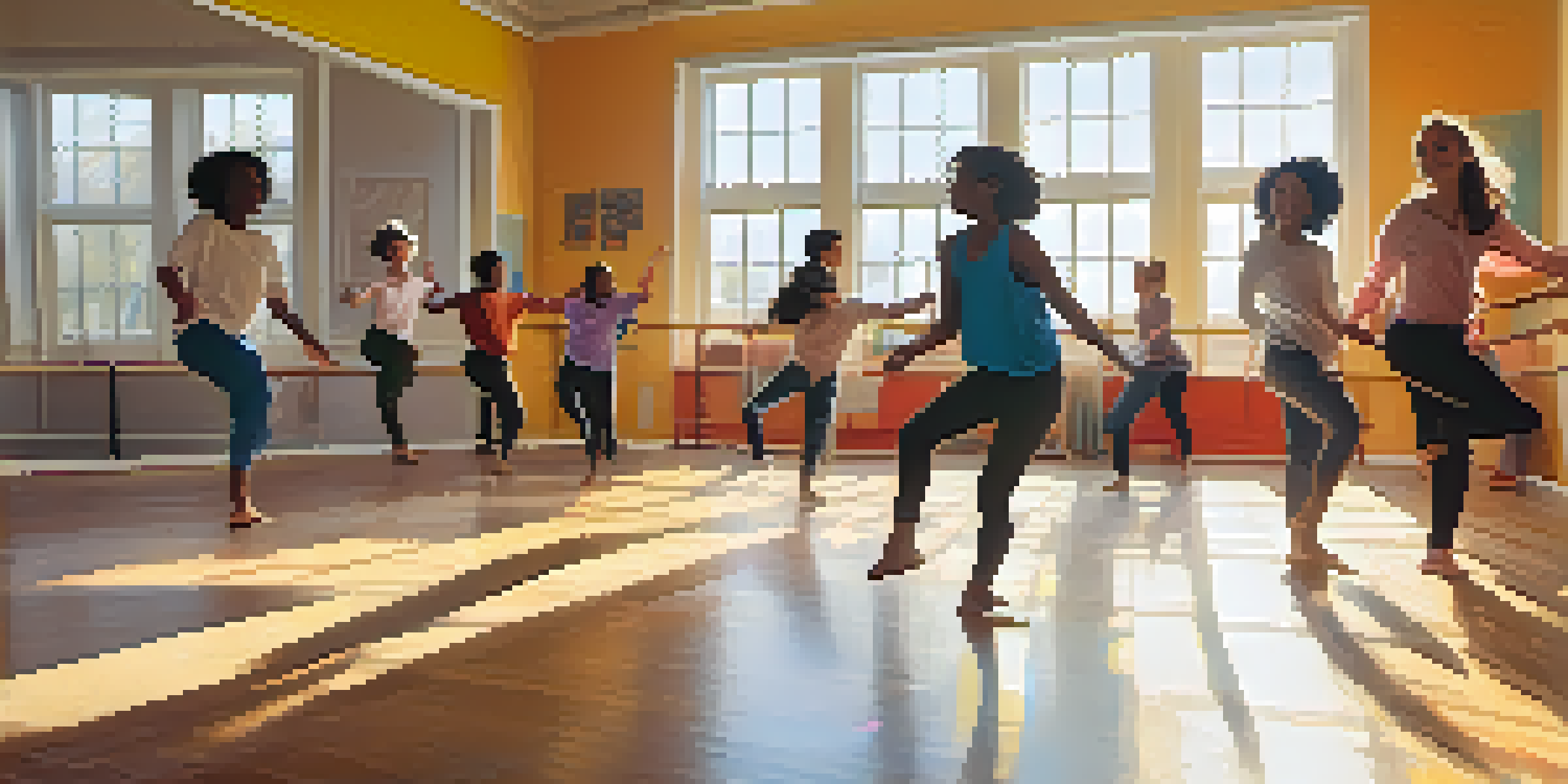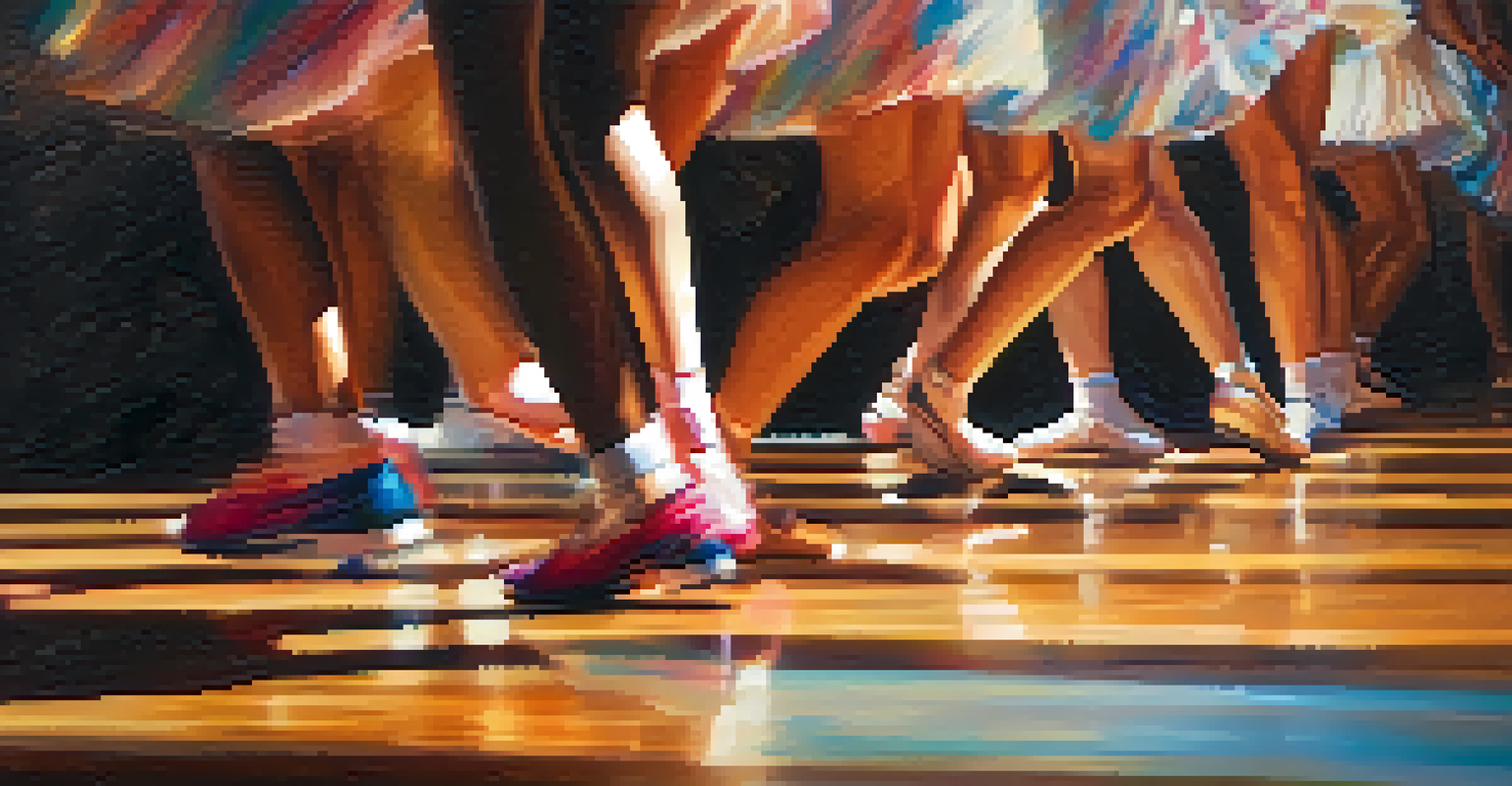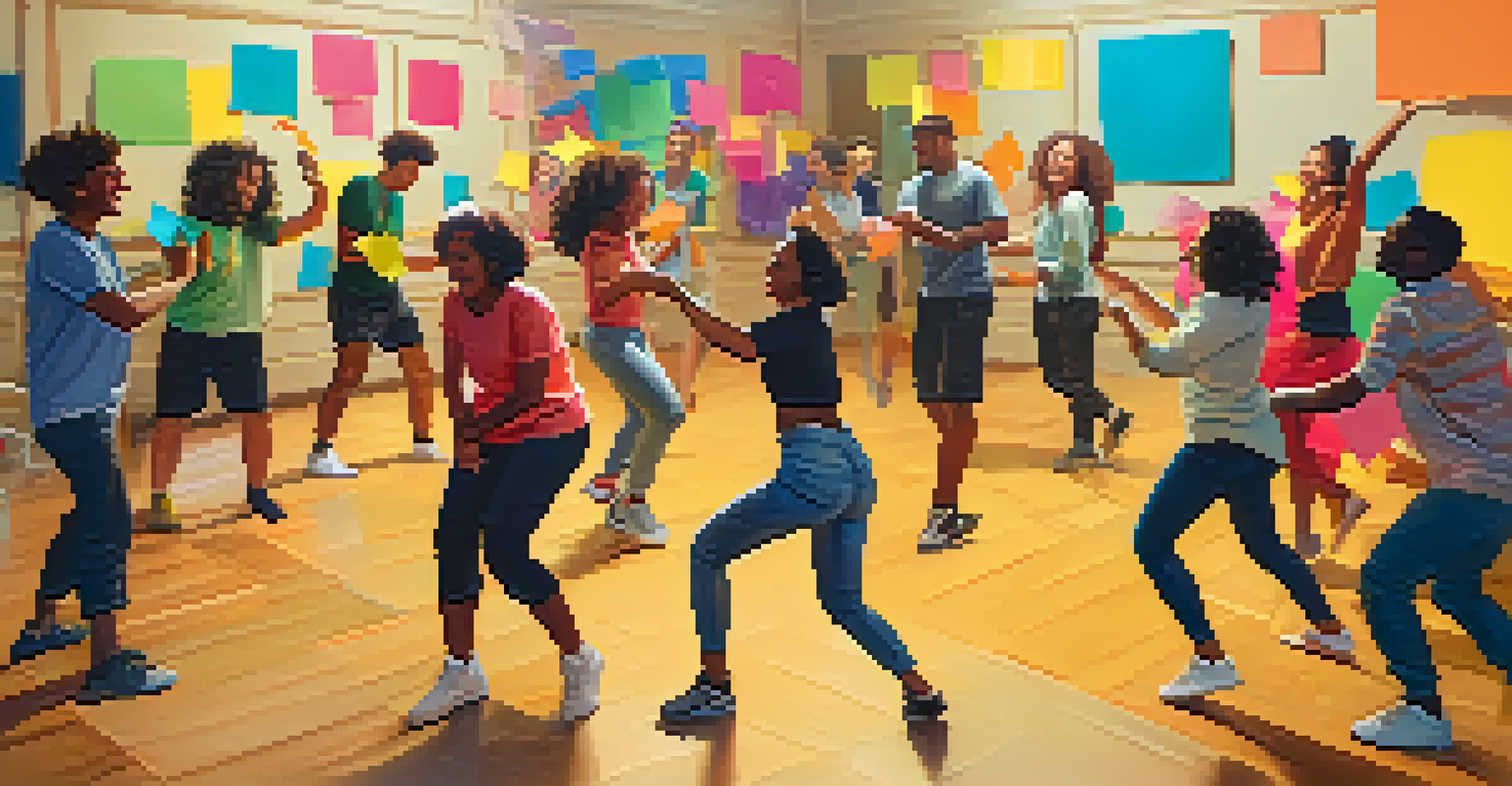Dance Therapy: A Unique Approach to Youth Empowerment

Understanding Dance Therapy and Its Benefits
Dance therapy combines movement and psychotherapy, using dance as a medium for emotional expression. It allows individuals to communicate feelings that might be difficult to articulate with words. This unique approach can benefit youth by enhancing their emotional and physical well-being.
Dance is the hidden language of the soul.
Through dance, young people can explore their identities and develop a sense of self-worth. They learn to express their thoughts and feelings in a safe environment, which fosters personal growth. This form of therapy not only addresses mental health issues but also promotes social skills and cooperation.
Moreover, dance therapy encourages creativity, allowing youth to engage their imagination. When they express themselves through movement, they often discover new ways to cope with challenges. This empowerment can lead to increased confidence and resilience in facing life's hurdles.
The Role of Movement in Emotional Expression
Movement is a powerful tool for expressing emotions, especially for those who find it hard to verbalize their feelings. Dance therapy taps into this innate ability to communicate through body language. The rhythm and flow of movement can evoke deep emotional responses, offering a cathartic experience for young participants.

For example, a shy teenager may struggle to share their feelings in a traditional counseling session. However, through dance, they might find it easier to express their fears and anxieties. This physical expression can be liberating, allowing them to release pent-up emotions and gain clarity.
Dance Therapy Enhances Expression
Dance therapy allows youth to communicate emotions that are difficult to express verbally, promoting personal growth and emotional well-being.
Additionally, the act of dancing can enhance mood and reduce stress. When youth engage in physical activity, their bodies release endorphins, the 'feel-good' hormones. This biological response can lead to improved emotional health, making dance therapy a beneficial practice for overall well-being.
Building Confidence Through Movement
Dance therapy provides a safe space for youth to explore their bodies and capabilities. As they learn new moves and techniques, they gain a sense of accomplishment that boosts their self-esteem. This newfound confidence can spill over into other areas of their lives, such as academics or social interactions.
Movement is a medicine for creating change in a person's physical, emotional, and mental states.
Engaging in dance also helps young people overcome self-consciousness. The focus shifts from how they look to how they feel, leading to a more positive body image. With every class or session, they learn to appreciate their bodies for their ability to move and express rather than conform to societal standards.
Moreover, dance encourages teamwork and collaboration, especially in group settings. When youth work together to create a performance or choreography, they build trust and camaraderie. This shared experience can strengthen friendships and foster a sense of belonging, further empowering them.
Fostering Community Through Dance Therapy
Dance therapy often takes place in group settings, promoting a sense of community among participants. This collective environment allows youth to connect with peers who share similar experiences and struggles. The feeling of belonging can be incredibly empowering, making them feel less isolated in their challenges.
Through shared movement, young people develop empathy and understanding for one another. They learn that others face similar difficulties, which can be comforting and validating. This sense of connection can create lasting bonds and support networks that extend beyond the therapy sessions.
Building Confidence Through Movement
Through dance therapy, young people gain self-esteem and positive body image, which can positively impact other areas of their lives.
Additionally, community performances or showcases can provide youth with a platform to share their stories. These events not only celebrate their hard work but also raise awareness about the importance of mental health. By sharing their journey through dance, they inspire others and contribute to a more supportive environment.
Dance Therapy Techniques for Youth Empowerment
Various techniques are employed in dance therapy to enhance emotional expression and empowerment. One popular method is improvisation, where participants move freely without a set structure. This encourages spontaneity and allows them to connect with their emotions in real-time.
Another effective technique is choreography creation, where youth collaborate to develop their own dance routines. This process fosters creativity and ownership, empowering them to express their unique stories through movement. It also builds teamwork skills as they work together to create a cohesive performance.
Additionally, guided imagery techniques may be used, where therapists encourage participants to visualize their emotions and express them through dance. This technique helps youth articulate complex feelings and can lead to profound insights. By combining creativity with therapeutic guidance, dance therapy becomes a powerful tool for self-discovery.
Challenges and Misconceptions About Dance Therapy
Despite its numerous benefits, dance therapy faces challenges and misconceptions. Some may think that dance therapy is only for those skilled in dance, which is far from the truth. In reality, it's about movement and expression, not performance ability, making it accessible to everyone.
Another misconception is that dance therapy is just a fun activity rather than a serious therapeutic approach. While it is indeed enjoyable, it also involves structured techniques and professional guidance to ensure emotional safety and effectiveness. This blend of fun and therapeutic purpose is what makes it so impactful.
Community Connection in Dance Therapy
Participating in dance therapy fosters a sense of belonging and empathy among youth, creating supportive networks that extend beyond the sessions.
Additionally, some individuals may be hesitant to try dance therapy due to cultural or personal beliefs about dance. It's essential to address these concerns and demonstrate how dance can be a healing and empowering experience. By fostering openness and understanding, more youth can benefit from this transformative practice.
The Future of Dance Therapy in Youth Programs
As awareness of mental health issues grows, the role of dance therapy in youth programs is increasingly recognized. Schools and community organizations are beginning to incorporate it into their mental health initiatives. This trend highlights the need for creative approaches to support youth in their emotional journeys.
The future of dance therapy looks promising, with more trained professionals entering the field. As practitioners develop innovative programs, they will continue to adapt techniques to meet the diverse needs of young people. This evolution ensures that dance therapy remains relevant and effective in promoting empowerment.

Moreover, the integration of technology in dance therapy is on the rise. Virtual classes and online resources make dance therapy more accessible, reaching youth who may not have local programs. This accessibility could lead to a broader understanding of the benefits of dance therapy and encourage more young people to engage in this empowering practice.